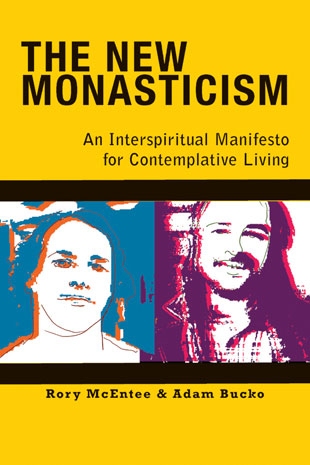"New monasticism is not just a theoretical concept. It is an orientation in life, a commitment that asks us to bring every aspect of our lives into a living relationship with God, with the Spirit, with the Buddha Nature-Mind, with one's deepest self. It is a life lived with That Which Is, Ultimate Reality, consciously at the center of everything one does. 'Who is a monk?' asks Brother David Steindl-Rast, answering, 'If the first thing you think of when you wake up in the morning is God, you are a monk!'
"New monasticism is also a discipline, a certain ascetical way of being that allows us to reorient ourselves by making all that we are available to the Divine, so the work of transformation can happen. We look to become the hands of God doing the work of healing in this world, where the Spirit takes hold of us and lives through us.
"This kind of life requires structure and commitment to spiritual practice. It is for this reason that many Fathers and Mothers of the fourth century left the world and embraced a disciplined life of being with God. It is for this reason Prince Siddhartha Gautama left his privileged life and family and subjected himself to stringent disciplines in his search for truth. It is for this reason that monasteries have specific schedules that allow monastics to flow through the day making the transformative journey the centerpiece of their lives. And it is for this reason that people called to new monasticism have to adopt specific disciplines of prayer and service. Without this kind of a commitment our highest calling remains stubbornly theoretical and imaginary. With it we can allow our deeper nature to emerge, within which profound change can take place. We move from a self-centered way of being to other-centered life.
"Rather than wait until the end of our book to put forth specific suggestions for daily practice, we wish to emphasize the importance of a disciplined life at the beginning, so that what is found here can and should be kept in mind throughout the book. Without the disciplined structure that a mature spiritual life demands, new monasticism remains but an ephemeral dream — beautiful, soaring, and inspiring, but ultimately fleeting. With an embodiment of disciplined spiritual praxis, described here as the heart of new monastic life, it becomes incarnational.
"If we accept the definition of praxis as the process by which a theory, lesson, or skill is enacted, embodied, or realized, what is a new monastic's spiritual praxis? How does one live in a way that makes new monastic life a reality? What are some of the specific disciplines that one needs to commit to?
"Before discussing particular disciplines, it is important to note what we outline here is an entry point to new monastic life. Practices change as one becomes more attuned to the Divine. The goal of these practices is to create a structure and container within which maturity can unfold and grace can descend. Once that begins to happen, the practice, the schedule, and the commitment can evolve. These practices are meant to prepare us for an experience of being in the depths of who we are. When we can recognize the presence of Ultimate Reality in our lives, our practices become modified. They change to accommodate the uniqueness of our relationship with the Divine so that we may live as a direct response to the guidance revealed in our hearts. Just as there are many stages that one passes through in one's spiritual life, so also are there many stages that one grows into in one's practice."
